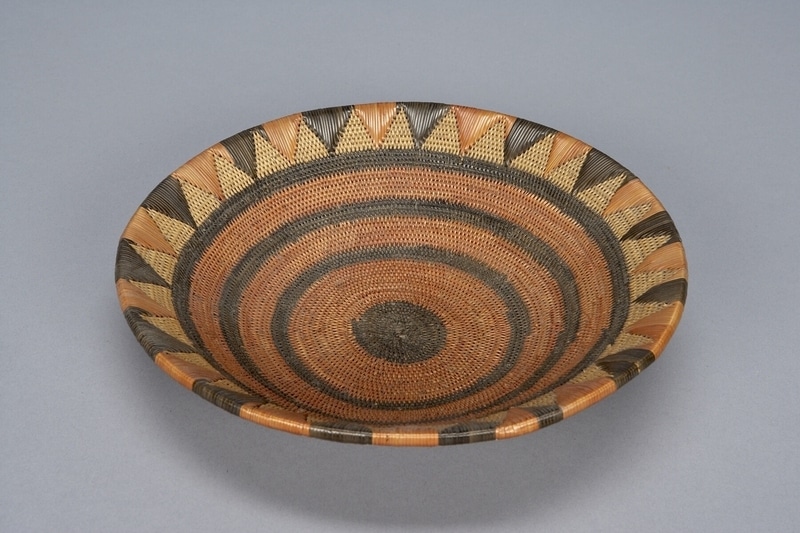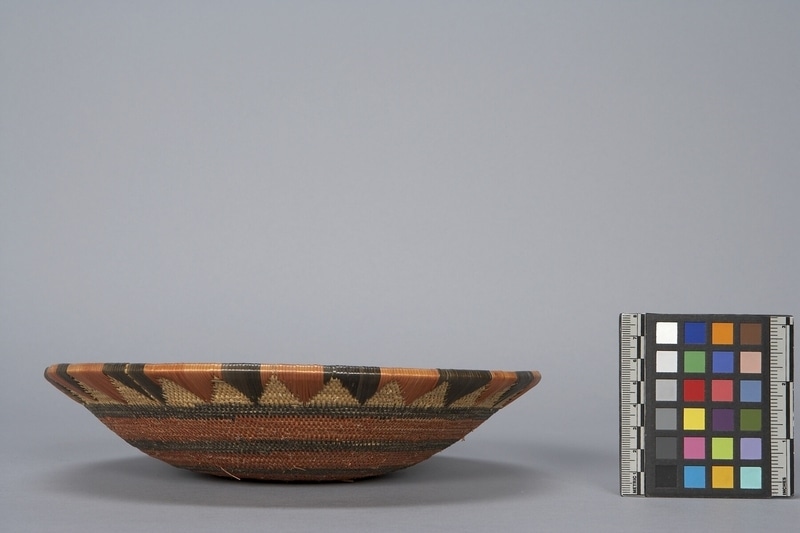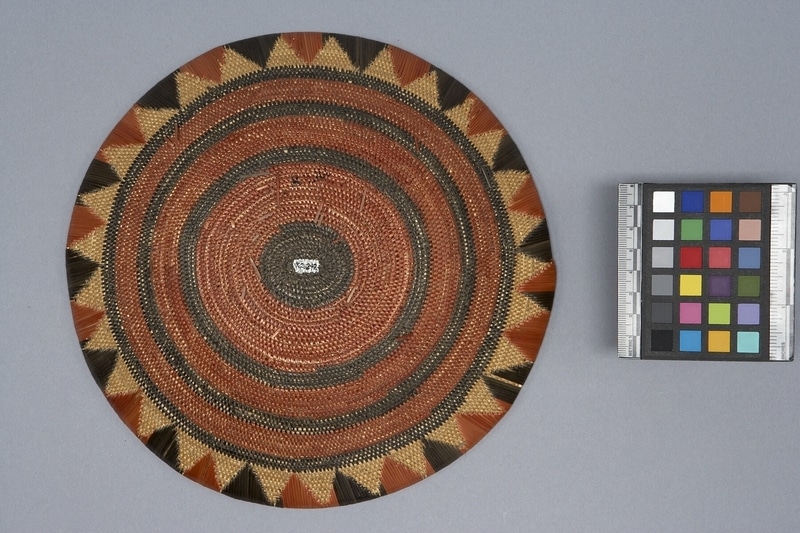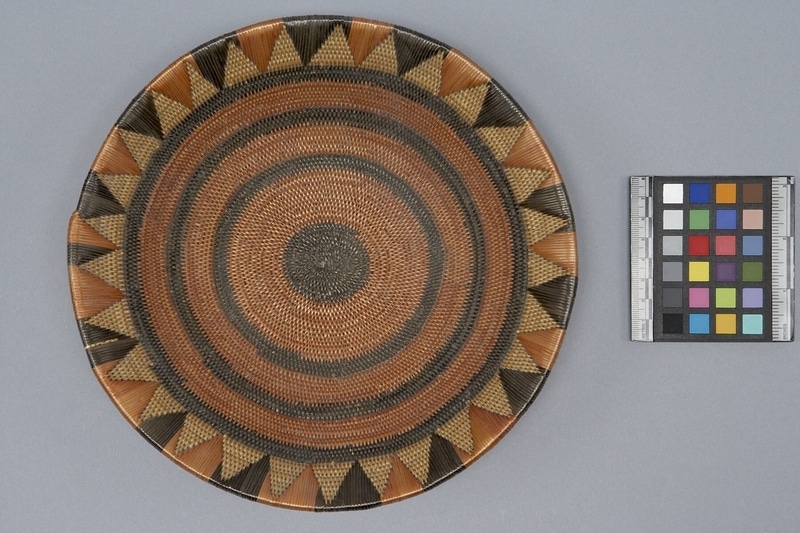Dish Item Number: K2.242 from the MOA: University of British Columbia




Description
Woven, grass dish consisting of an orange and black design of concentric circles. The rim has is a natural colour band with alternating orange and black overlapping triangles.
History Of Use
Domestic use. Weaving is traditionally done by women, and the knowledge is passed down from mother to daughter. For the Fulani, grass weaving is vital because the items they create can be used for shelter, indicate prosperity, aid chores, and be sold at market to generate income. Fulani dishes are kept on the one table in the household and used most days to serve breakfast, dinner or serve other items. Some say the fullness of the table (full with pots, plates etc.) represents the mother's prosperity and fertility; a full table then represents a fortunate woman. When a daughter marries the mother will give her items from her table. This is symbolic of passing on her prosperity into the new marriage and simultaneously symbolizing the mother’s decline in prosperity.
Specific Techniques
Grass weaving involves taking several thin leaves of the same length and using one of them to bind the outside of the other leaves. This creates a strand which can then be bent around other bound leaves in order to interlock and create a structured weave. This method does not require a loom or tools.
What
Where
- Holding Institution
- MOA: University of British Columbia
- Made in
- Sudan
Other
- Item Classes
- basketry
- Condition
- good